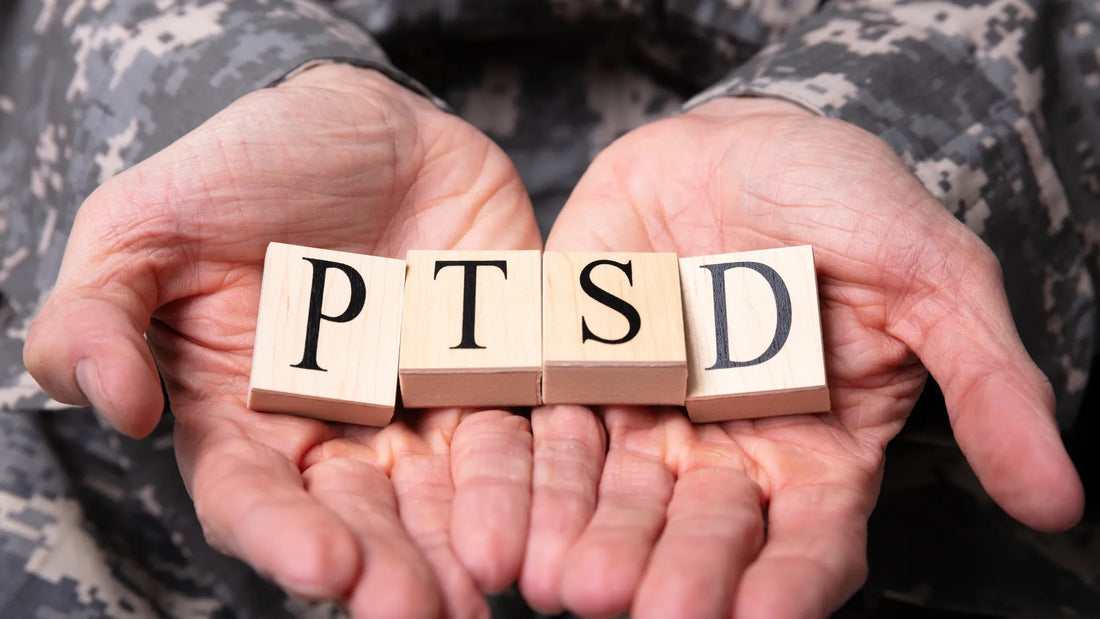
Navigating PTSD in today’s world
Share
Navigating the Storm:
Understanding and Coping with Post-Traumatic Stress Disorder (PTSD) Life unfolds like a journey, offering diverse landscapes – some sunlit and smooth, others challenging and turbulent. Post-Traumatic Stress Disorder (PTSD) can look like an unexpected storm, leaving emotional scars and disrupting our sense of safety and well-being.
Understanding PTSD:
PTSD, a mental health condition triggered by witnessing or experiencing a traumatic event that overwhelms one's ability to cope, impacts many individuals. While war veterans, first responders, and abuse survivors are at higher risk, anyone can experience PTSD. It's crucial to remember that experiencing these symptoms don't define you – they are natural reactions to a difficult, traumatic and/or stressful experiences.
Recognizing the Symptoms:
PTSD symptoms can vary in intensity and duration, forming a unique combination for each individual. Some common signs include:
- Intrusive memories and flashbacks: Vivid recollections or reliving the traumatic event, often accompanied by intense emotions like fear or panic.
- Nightmares: Disturbing dreams related to the trauma, further disrupting sleep and amplifying anxieties.
- Avoidance: Actively avoiding places, people, or situations that trigger memories of the trauma.
- Negative thoughts and beliefs: Feeling numb, detached, or guilty, questioning one's sense of safety and self-worth.
- Hypervigilance and hyperarousal: Being easily startled, experiencing difficulty concentrating, and feeling constantly on edge.
These symptoms can significantly impact daily life, affecting relationships, work, and overall well-being. Seeking professional help is crucial for managing them effectively.
Seeking Refuge and Remedies:
Therapy: Seeking professional help from a therapist trained in PTSD treatment is crucial. Therapies like cognitive-behavioral therapy (CBT) and Eye Movement Desensitization and Reprocessing (EMDR) can help individuals process the trauma, manage their symptoms, and develop coping mechanisms.
Support Groups:
Connecting with others who share similar experiences can offer invaluable support, understanding, and validation. Sharing and learning from others can empower individuals to feel less alone and more hopeful. You can also choose nerve stimulants to accompany you in the journey towards a calmer life - with the InnerGize vagus nerve stimulating patch being an accessible and viable option.
Healthy Lifestyle:
Taking care of oneself physically and emotionally is essential for healing. This includes establishing healthy sleep routines, engaging in regular physical activity, practicing relaxation techniques like mindfulness and meditation, and maintaining a balanced diet.
Support Systems:
Building and nurturing strong relationships with family and friends can provide a safe space for expression, understanding, and encouragement. Sharing your experience with loved ones can foster their support and strengthen your network. Remember, healing is a journey, not a destination. There will be ups and downs, but with patience, commitment, and the right support, you can overcome the challenges of PTSD and reclaim your sense of well-being.
Additional Resources:
- National Center for PTSD: https://www.ptsd.va.gov/: https://www.ptsd.va.gov/
- The National Alliance on Mental Illness (NAMI): https://www.nami.org/: https://www.nami.org/
- MentalHealth.gov: https://www.mentalhealth.gov/: https://www.mentalhealth.gov/







